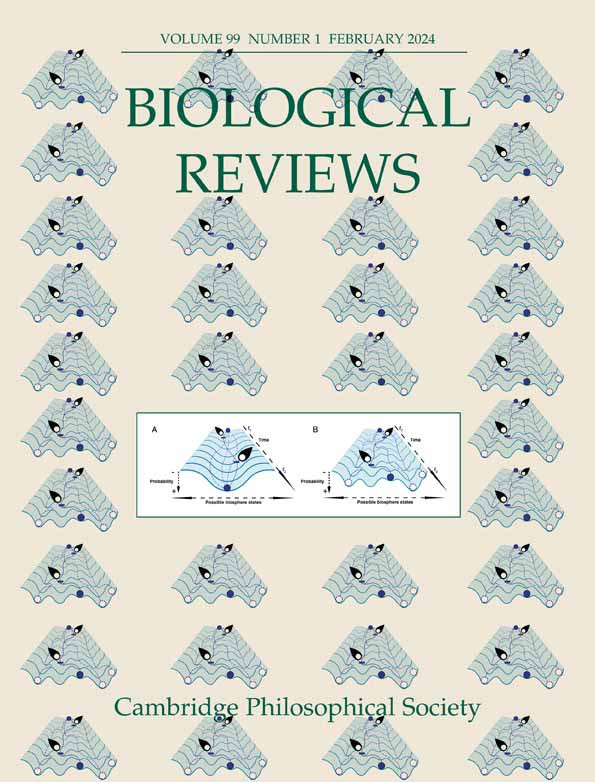Egg coverings in insects: ecological adaptation to abiotic and biotic selective pressures
Abstract
Insects have evolved a spectrum of strategies that facilitate survival in the face of adverse environmental conditions and bottom-up or top-down pressures. The egg is the first stage in the life cycle of most insects. It is not only immobile but in many insects is the stage that survives unfavourable seasons when food resources are unavailable. Eggs are targeted by oophagous natural enemies and also are subject to abiotic stresses. In response to these diverse stresses, insects have developed various egg protection strategies. Females of many insects lay eggs in clusters and then use their own body resources to cover them to provide protection from harsh environments and biotic attack. Such egg protection strategies have allowed some herbivorous insects to thrive in new environments and become serious invasive pests. Females of many insects protect their eggs in other ways (e.g. laying eggs in concealed places, direct parental care) while others do not provide protection at all. Here, we review various egg protective strategies in insects. Our focus is on adaptive ecological mechanisms and temporal variation as well as the benefits and costs of egg coverings. We highlight several case studies on how these egg protective traits might impede biological control of globally important agricultural and forest pests and propose a framework for incorporating egg protective traits into biological control programs especially for invasive insect pests.

 求助内容:
求助内容: 应助结果提醒方式:
应助结果提醒方式:


